Scottish born and Australian bred painter (and self proclaimed 4th generation free thinker) Max Meldrum (1875–1955) was one of Australia’s most famous artists of his day.

Max Meldrum in his studio by Percy Spiden
What made Meldrum a famous artist was not just his paintings (which were widely acknowledged as some of Australia’s best), but his love of an argument and enormous self-belief in his work and theories. This gained him many detractors as well as devotees (nicknamed by the media as Meldrumites). Judging by the cartoon by his student Percy Leason, even his followers would take issue with him.
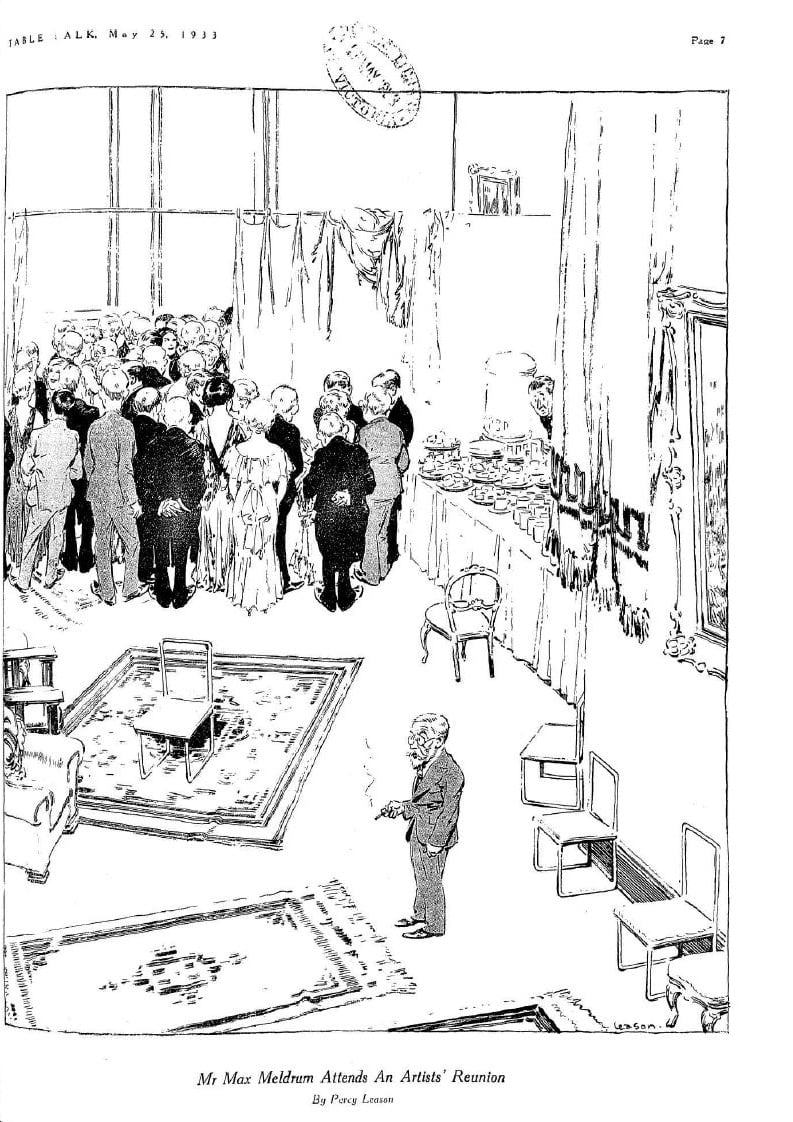
Mr Max Meldrum attends an artist’s reunion by Percy Leason; Table Talk. May 25, 1933, 7
Meldrum was known for his devotion to a painting theory called tonalism. Meldrum argued that when painting, the tonal variations of the subject (the darkness and light) were the key for the artist to consider, far ahead of drawing skill and colour. Established artists that Meldrum was inspired by included Velazquez, Rembrandt and Corot.
An example of Meldrum’s painting method in progress can be seen in this sequence of photos taken of a Meldrum artwork .
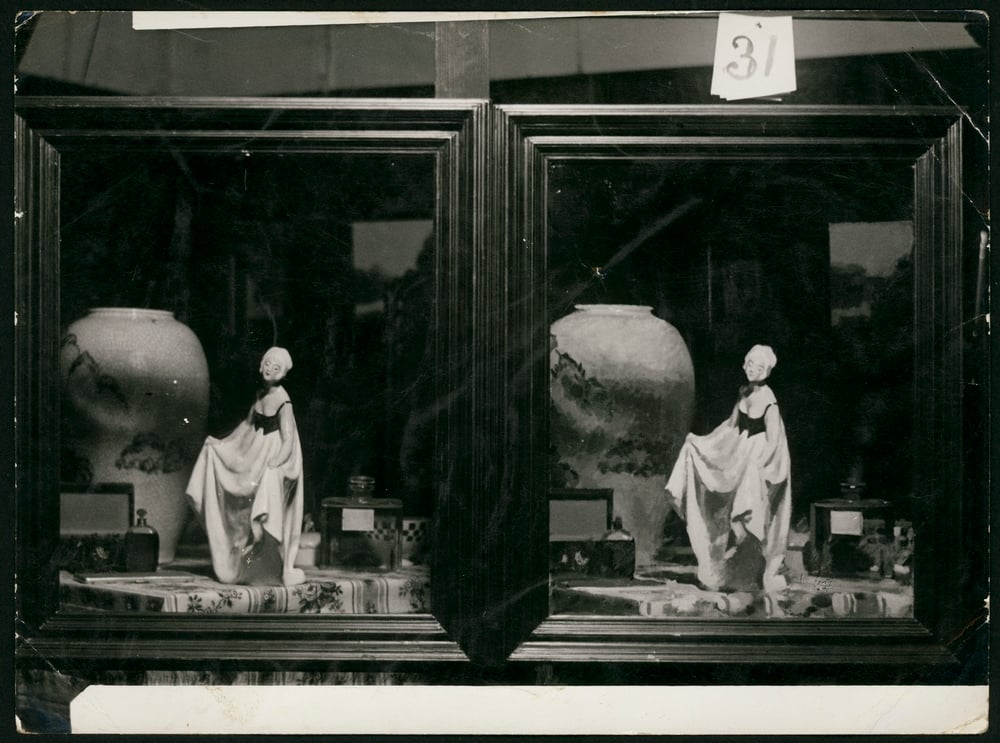
Developing painting of a still life by Percy Spiden
Meldrum hated most of the popular and contemporary painting of the day (for example: Impressionism and Cubism), which made him too revolutionary for some and too conservative for others. Meldrum would have approved of Leason’s depiction of ‘modernists’ falling to their doom.
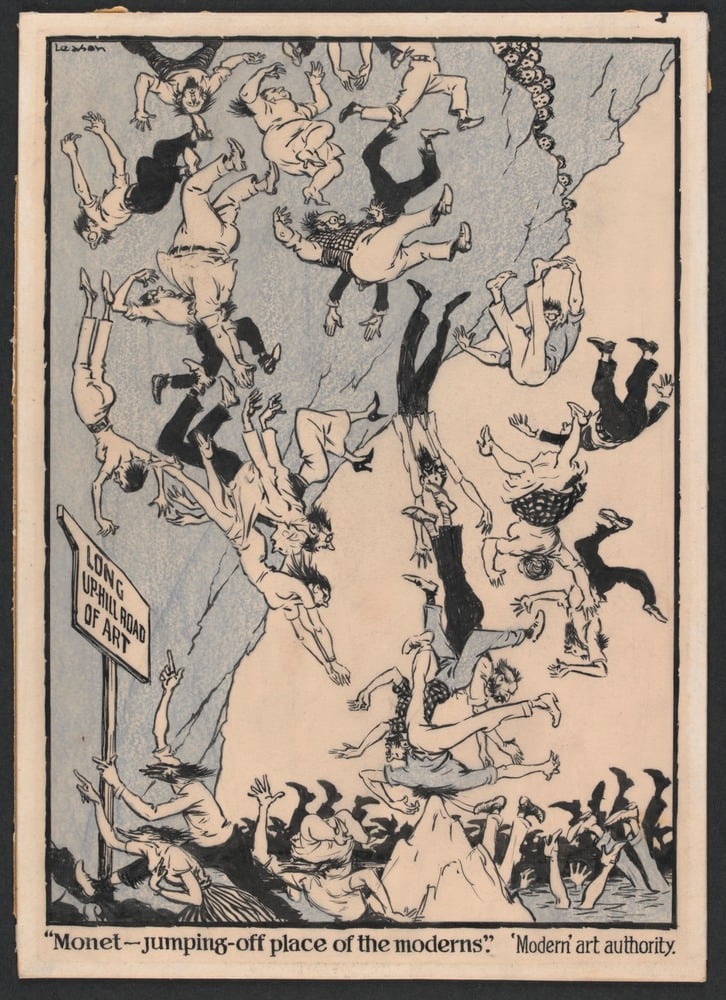
And how! by Percy Leason
In 1916 Meldrum became President of the Victorian Artists Society. His time there was short and controversial. He displeased the society’s established painters and they revolted, voting him out after only a year.
Meldrum established his own art school in Melbourne’s CBD. His enthusiastic and effective teaching style gained him followers, several who had already been taught elsewhere. Students of Meldrum included: Clarice Beckett, Colin Colahan, Polly Hurry, Justus Jorgensen, Betty and Esther Paterson, Archibald and Amalie Colquhoun, and Arnold Shore (who later became a pioneer of Australian modernism). Others influenced by him included Lloyd Rees and Roy De Maistre.
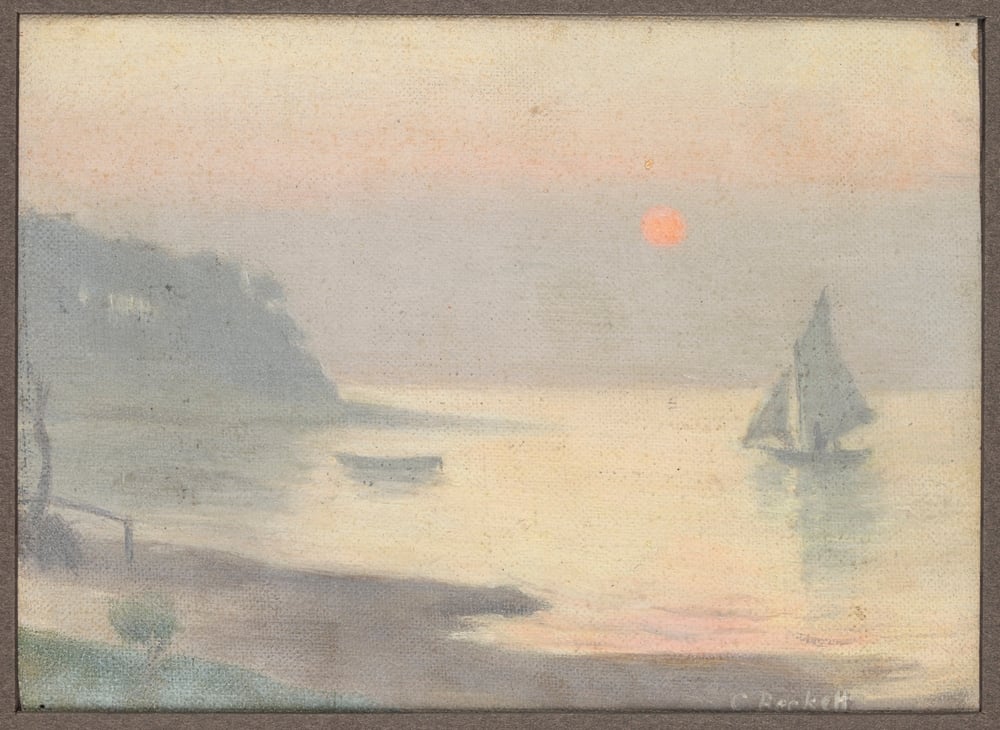
Boat on water by Clarice Beckett, c 1924
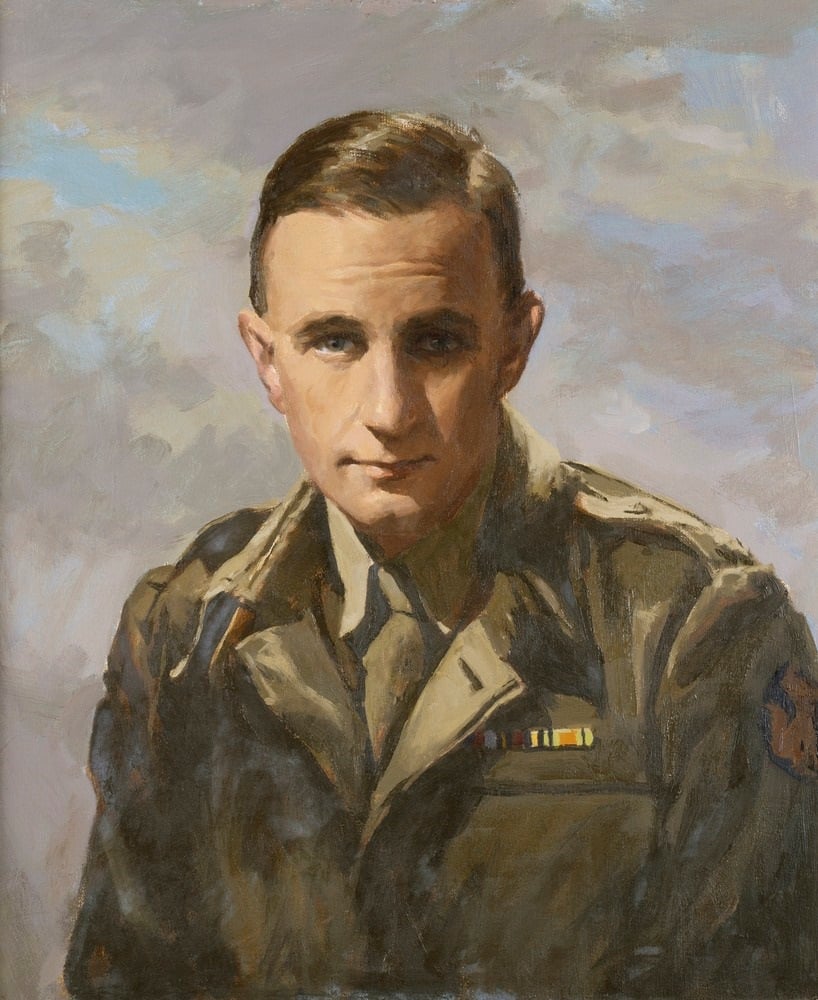
Peter Purves Smith by Archibald Douglas Colquhoun, c 1946, From the collection of Mrs W. Purves Smith
Several of Meldrum’s students remained friends after leaving his teaching. Colahan, Jorgensen, Leason, and Beckett, amongst others, would work together and socialise whilst still remaining close with Meldrum. Others came into the orbit of this group, including writer Mervyn Skipper, his wife Lena and their children Helen, Sonia and Matcham, and the writer Betty Roland.
In 1930 Mollie Dean, a promising writer and lover of the married Colahan, was murdered. This sad event put great strain on Colahan and his associates. Books by Katherine Kovacs and Gideon Haigh released in 2018 look at Mollie Dean’s life and tragic end.
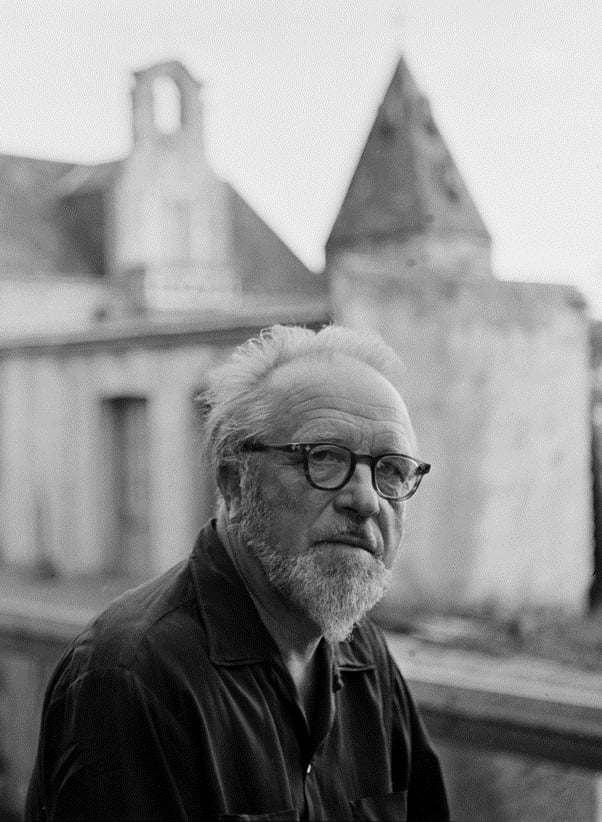
Justus Jorgensen, Montsalvat, Eltham, Victoria by Henry Talbot
Justus Jorgensen, who was one of Meldrum’s most gifted followers, started his own painting school in Melbourne’s CBD in the 1930s. His charismatic approach (as well as being inclusive of other styles along with tonalism) saw him gain many students, including some of Meldrum’s (much to the latter’s annoyance).
By 1935, Jorgensen, his doctor wife Lil, and some of the aforementioned and their families began an artist’s colony in Eltham called Montsalvat. Establishing the colony was a massive effort, with the building of several mud-brick dwellings to provide housing and studio space.
The living arrangements at Montsalvat, which included communal meals, attempted to make time to create art and engage in robust artistic, political and philosophical discussion. This freedom was not just for the men, women were ‘only’ required to undertake one day of cooking per week for all of the colony members [1]
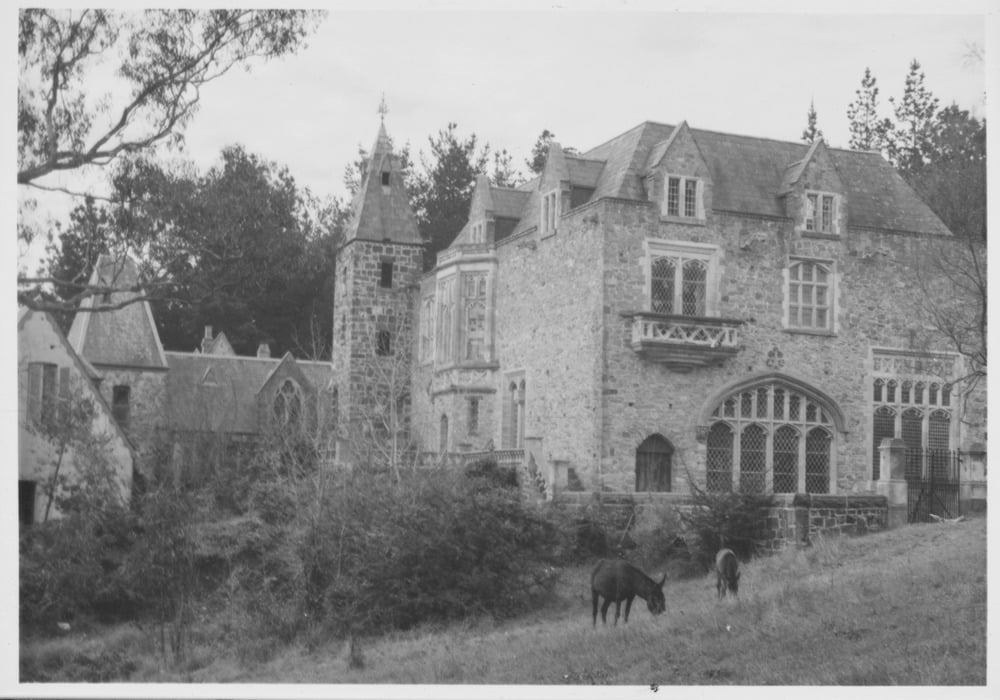
Eltham “Montsalvat” by John T Collins, 1963
The friendship group of Meldrum’s students started to breakup at around the time of Montsalvat’s building. Beckett died in 1935 from pneumonia brought on from painting outside during a storm. It took many years for her talents to be widely recognised.
Leason painted a series of portraits on Aboriginal Australians in 1934. He then worked on developing his own theories regarding cave paintings. Both of these efforts by Leason were ridiculed by Meldrum, Jorgensen, and Colahan. He moved to New York in 1938, continuing to paint, illustrate, and theorise until his death in 1958. A significant donation of his work and papers were given to State Library Victoria, and many of his artworks have been digitised.
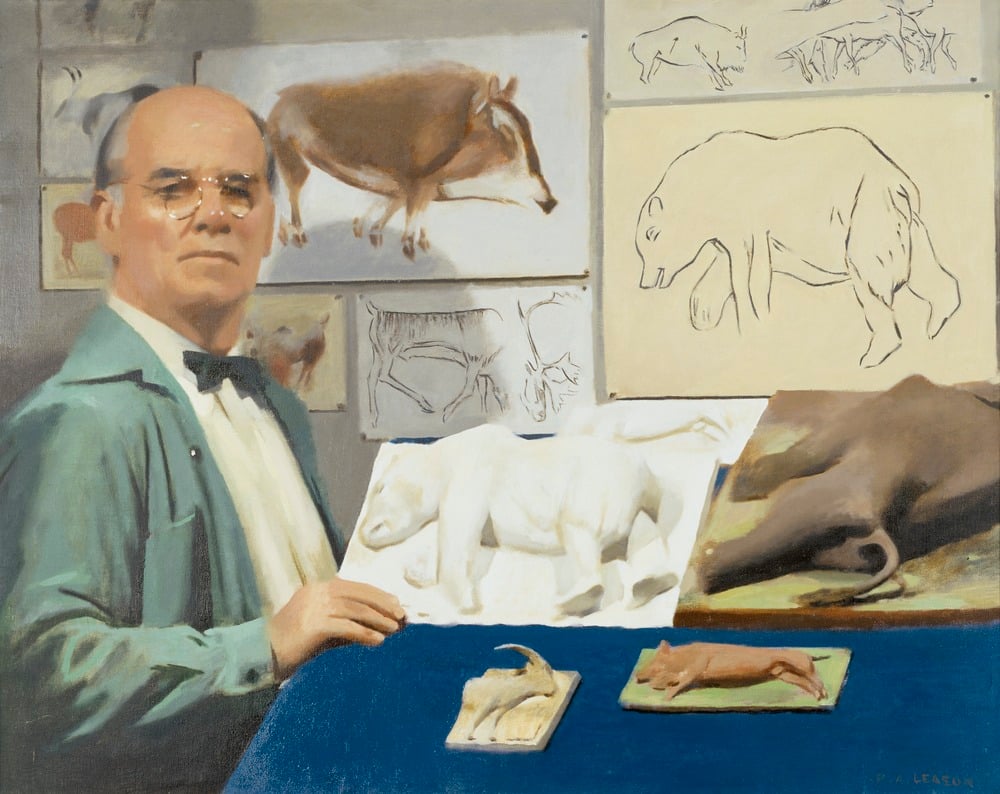
Self portrait with cave paintings by Percy Leason
By the late 1930s, Colahan moved to Europe, and worked as an Australian war artist during World War 2. He eventually settled in Italy and had a successful career, passing away in 1987.
Jorgensen stayed on at Montsalvat with his families, teaching many pupils until his passing in 1975. His son Sigmund managed Montsalvat for many years, and wrote a history of the property.
Betty Roland published a racy recount of her time at Montsalvat interpreting various diaries of residents and the prodigious volumes of Jorgensen’s musings (which were written by Mervyn Skipper).
Meldrum remained a well-known and controversial artist, winning the Archibald Prize for portraiture twice. He passed in 1955 after spending his last few years of his life bedridden. An interesting brief oral history about him can be found in the book On lips of living men by John Thompson.
References
[1] Betty Roland, ‘Community living in Victoria’ Centralian Advocate June 3, 1949 p 14, viewed on Trove

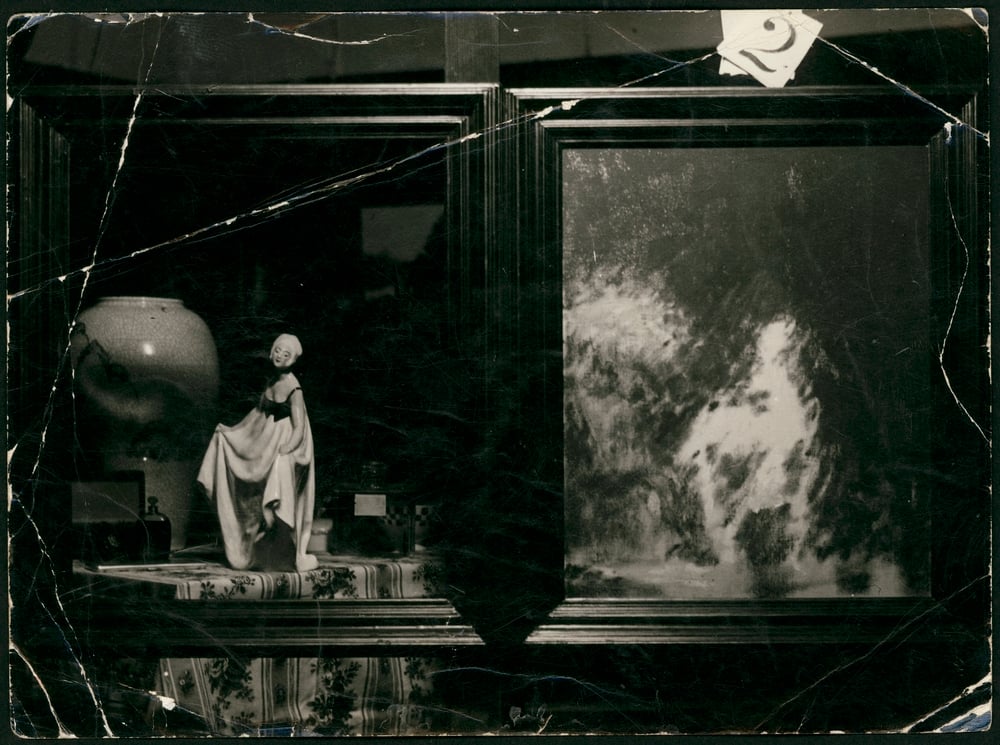
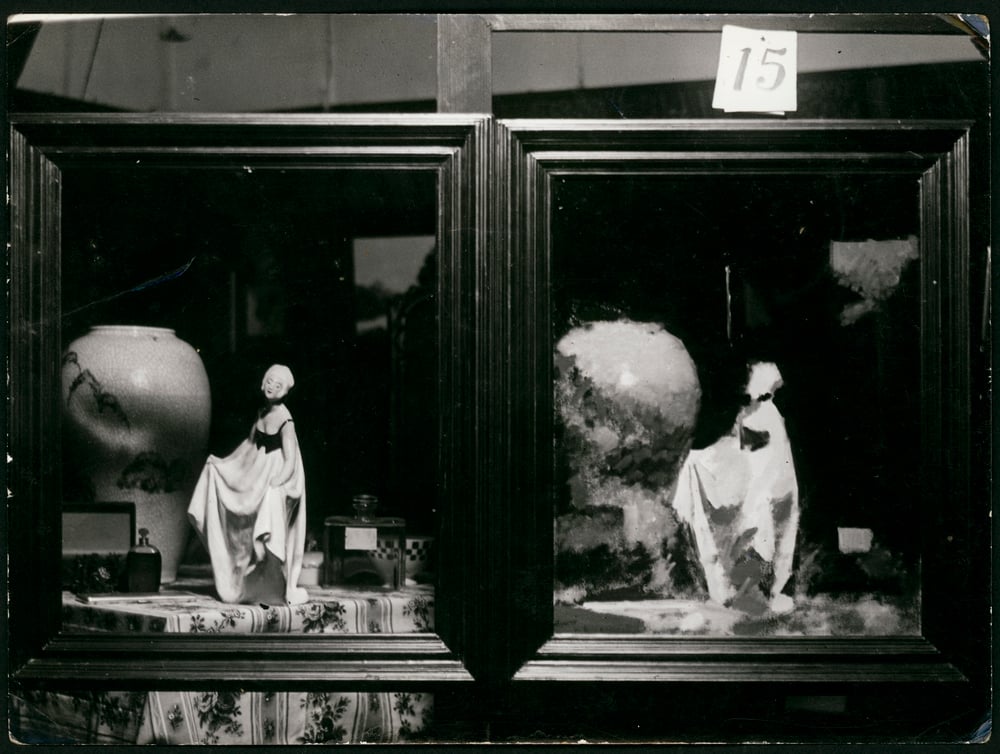

Pingback: Clarice Beckett exhibition is a sensory appreciation of her magical moments in time
Thank you for the opportunity to more comprehensively understand the artists and the period of time that shaped their art